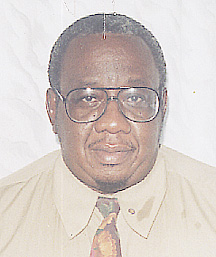A special session to facilitate interaction between Guyanese and Chinese entrepreneurs has been included in the September 12-13 Third China/Caribbean Economic Forum and Trade Exposition in Trinidad and Tobago.
President of the Guyana Manufacturing and Services Association (GMSA) Clinton Williams believes that the exchange can open up new vistas of trade and commercial cooperation between Guyana and China at the level of the private sector.
While some local entrepreneurs have long been marketing Chinese-made products in Guyana, Williams told Stabroek Business he believed that the face-to-face meetings between Guyanese businessmen and their Chinese counterparts will facilitate “exchanges of views and ideas” that could both create potentially lucrative new markets for locally produced products and allow for the marketing of Chinese products in Guyana. Williams said the GMSA was particularly looking forward to discourses between and among the businessmen with a view, perhaps, to the creation of possible joint venture investment arrangements.

Williams named agriculture, agro-processing, construction and hospitality as sectors that might hold prospects for joint venture partnerships between Guyanese and Chinese investors.
Local entrepreneurs interested in participating are required to submit their company profiles to the GMSA’s Waterloo Street office. Stabroek Business has learnt that the association has already received such profiles from entities in the aviation, hydropower, hotel and hospitality, trading and service sectors. According to the GMSA source, other local entities have been contacting the association to secure more information on the event. Stabroek Business has further learnt that the GMSA and the Chinese Embassy in Georgetown are to host a joint briefing session on the Economic Forum and Trade Exposition by the end of this month.
Initiated in 2003 under an aggressive Chinese economic diplomacy push to strengthen its presence in the region, the forum is held alternately in China and a Caribbean country every four years. Since its inception, the event has come to symbolize growing Chinese interest in cementing economic ties with the region, a circumstance that has coincided with the increasing presence of Chinese traders in the region.

Even as Guyana and the rest of the Caribbean prepare to host the third round of trade and economic interaction with the Chinese private sector, speculation continues to be rife as to what lies behind China’s undisguised economic interest in the clutch of small states that are only marginally important to China’s quest to become the world’s number one economic power. While Williams is more concerned about the benefits that Chinese investments can bring to Guyana and the rest of the Caribbean he is, too, mindful of the fact, that China’s quest to get to the top includes initiatives that can demonstrate the extent of its economic reach.
Williams’s point is perhaps borne out by the significant investments which the Chinese have made in the Caribbean in recent years. While Beijing’s overall investment in the region is difficult to quantify, reports from China’s Ministry of Commerce indicate that Chinese foreign direct investment in the Caribbean amounted to almost US$7 billion two years ago, up by more than 300 per cent from the US$1.7 billion invested in 2004. Even those figures can be somewhat misleading when account is taken of the use by Chinese businessmen of regional tax havens, particularly in the Cayman Islands which, alone, received US$5.3 billion in Chinese foreign investment in 2009.
Among Caricom countries, Trinidad and Tobago has been leading the way in terms of trade with China. Between January and September last year China reportedly exported US$360 million to Trinidad, an amount which, while decidedly modest by Chinese standards is considerable for the Caribbean. In turn, Trinidad and Tobago exported around US$100 million of mostly asphalt and related products to China.
What has raised eyebrows, however, is the string a high-priced Chinese investments by both the Chinese government and private Chinese investors in some of the largest projects in Caricom territories; like the US$2.4 billion that China’s Exim Bank is pumping into the construction of a 3,800-room resort in the Bahamas that will reportedly boast the largest casino in the Caribbean. Around 5,000 Chinese workers are expected to build the Baha Mar resort on Cable Beach. That apart, the Hong Kong-based firm Hutchinson Whamopoa Ltd, is to construct and operate a $US1 billion container port in Freeport, Bahamas
China made a commitment earlier this year to build a US$600 million deep-sea harbour, highway and port in Suriname that will link the country to Brazil. The Dominican Republic has been the recipient of a US$462 million investment in a beachfront resort called Punta Perla.
Other Chinese-funded projects in the Caribbean have raised eyebrows; like China’s investment of almost US$140 million in the building of a cricket stadium in Dominica, a country, which regional analysts have pointed out, is populated by considerably less than 100,000 people.
These apart, the Chinese firm Bosai has also invested US$100 million in the purchase of what has been the hugely unprofitable Omai Bauxite Mines from the Government of Guyana and the Shanghai Construction Company has undertaken the construction of both the Official Residence of the Prime Minister of Trinidad and Tobago and the country’s National Academy of Performing Arts.
Regional foreign policy analysts have questioned exactly what China is seeking from the Caribbean in exchange for these huge investments. But Caricom states have welcomed the Chinese investments warmly, notably, the development aid, in the light of the sharp reduction of aid from the US.
Some analysts, like former Jamaican ambassador to US and current Director for the Caribbean at the Washington-based Inter-American Development Bank Richard Bernal, regard the Chinese public and private sector investments in the Caribbean as the shock troops for a diplomatic offensive that seeks to roll back Taiwanese influence in the region. Bernal points out that of the 23 countries that have retained formal diplomatic ties with Taipei, six – Belize, the Dominican Republic, Haiti, St Lucia, St Kitts and Nevis and St Vincent and the Grenadines — are in the Caribbean.
Economic interaction with China, Bernal says, cannot be fully understood without factoring in geopolitics.









